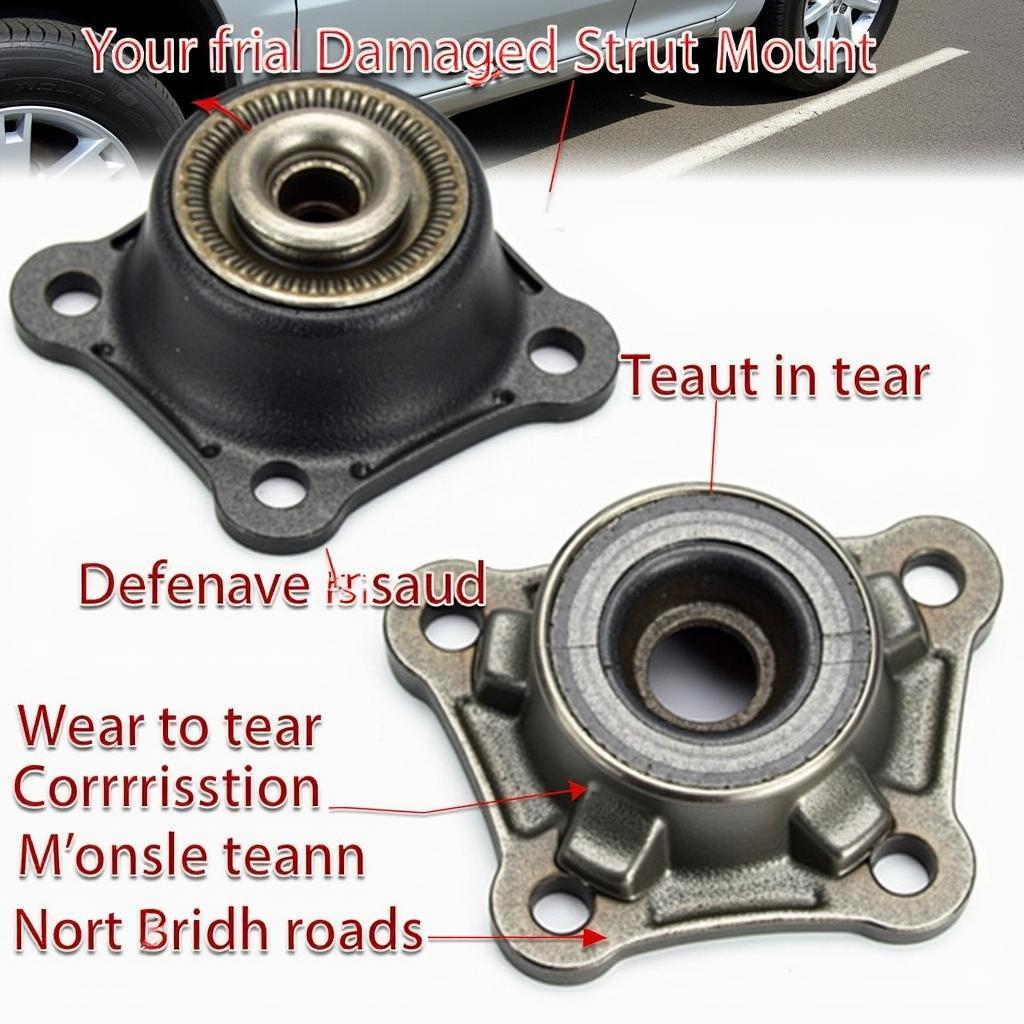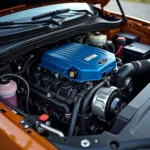The strut mount, also known as a shock absorber mount, is a small yet vital component in your vehicle that plays a crucial role in steering, ride comfort, and safety. It connects the strut assembly to the vehicle’s body, allowing the wheels to turn during steering. In this article, you will learn everything you need to know about the strut mount, from its function and signs of failure to repair options and maintenance tips.
What is a Strut Mount and Why is it So Important?
The strut mount connects the strut assembly to your car’s body. It allows the wheels to pivot during steering while simultaneously absorbing shocks and vibrations transmitted from the road to the body. An intact strut mount ensures precise steering, comfortable ride quality, and stable road handling. Without this small yet crucial component, driving would be a bumpy and unsafe endeavor.
Signs of a Defective Strut Mount
A defective strut mount exhibits various symptoms. Clicking or rattling noises when steering, especially when turning or driving over bumps, are typical signs. Unstable steering, vibrations in the steering wheel, or uneven tire wear can also indicate a problem with the strut mount. Dr. Karl Heinz Müller, author of “Modern Vehicle Technology,” emphasizes: “Ignored issues with the strut mount can lead to more severe damage to the steering and suspension systems.”
Causes of Strut Mount Failure
The most common causes of strut mount failure include wear due to aging and material fatigue, heavy load from poor road conditions or aggressive driving, and corrosion caused by moisture and road salt.
 Close-up view of a damaged strut mount indicating common causes of failure
Close-up view of a damaged strut mount indicating common causes of failure
Strut Mount Repair and Replacement
Replacing a defective strut mount should be performed by a qualified workshop. The effort and cost vary depending on the vehicle model and the complexity of the assembly. In some cases, additional components such as struts or shock absorbers may need to be replaced as well.
Tips for Maintenance and Prevention
Regular inspections of the suspension system by a professional can help detect strut mount issues early. Avoid potholes and drive cautiously over uneven surfaces to minimize stress on the strut mount.
Strut Mounts: An Overview of Different Types
There are different types of strut mounts used depending on the vehicle model and requirements. These include rubber mounts, hydraulic mounts, and electronically controlled mounts. Each of these mounts has specific properties and advantages.
Frequently Asked Questions About Strut Mounts
- How long does a strut mount last? The lifespan of a strut mount depends on various factors, such as driving style and road conditions. On average, the lifespan is between 50,000 and 75,000 miles.
- Can I replace a strut mount myself? Replacing a strut mount requires special tools and expertise. It is recommended to have the replacement performed by a qualified workshop.
- How much does it cost to replace a strut mount? The cost of replacing a strut mount varies depending on the vehicle model and the workshop.
Similar Topics in Auto Repair
- Shock Absorbers
- Struts
- Steering
Need Help with Your Strut Mount Repair?
Contact us via autorepairaid.com. Our auto repair experts are available 24/7 and are happy to assist you. We offer professional support and advice on all aspects of auto repair.
Strut Mounts: Safety and Driving Comfort for Your Vehicle
A functioning strut mount is essential for your vehicle’s safety and driving comfort. Pay attention to the signs of a defective mount and have it repaired promptly. Regular maintenance and inspections help extend the lifespan of the strut mount and avoid costly consequential damage.

